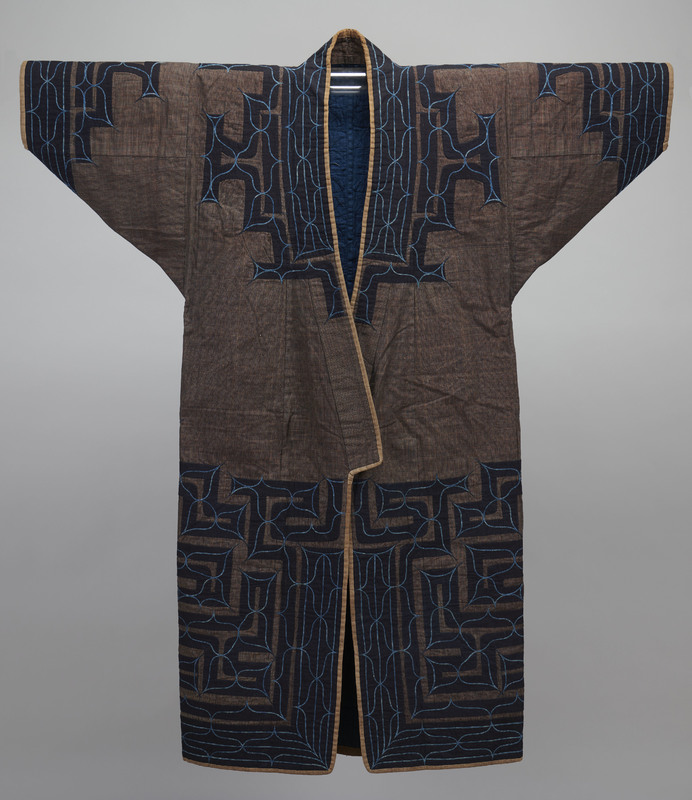Patterns, Textiles, and Self-Expression
Textiles play a key role in Ainu society and identity, and reflect the historical processes and philosophies that define Ainu culture. While traditional garments were originally made from furs, fish skins, and attus,1 by the late Edo and early Meiji periods, most Ainu textiles were crafted from imported Japanese cotton.2 Known as a chikarkarpe (cikarkarpe), this robe was likely first produced as a man’s cotton kimono in one of Japan’s large industrial centers before it was shipped to southern Hokkaido, where it was tailored and adorned with its vivid blue appliqué and embroidery.
Because all aspects of life are influenced by the presence of kamuy, traditionally, strict protocols applied to weaving, sewing, and detailing Ainu garments. Only women created textiles, and because cultural taboos prohibited showing animal, plant, and human images in art,3 designs were largely abstract. Basic skills and patterns were passed down from mother to daughter, however there were no set forms to which one was expected to adhere. Rather, creativity and innovation were encouraged, and intricate and detailed patterns, such as the embroidered thorns (ay-us-sirki), eyes (sik-sirki) and kiraw “horned” corners, were sewn with great care into the garment as a way to protect the intended wearer from malevolent kamuy and bad luck.4, 5 Given the intensely personal dimension of crafted objects and because of the great creative freedom designers were allowed in their work, traditional arts, crafts, and textiles like this chikarkarpe, have played an integral part in expressing Ainu cultural identity throughout the centuries.
1.) Attus (also spelled attush) is a fiber made from the inner bark of the elm tree. See: Chisato Dubreuil, “Ainu Art: The Beginnings of Tradition,” Ainu: Spirit of a Northern People, 287.
2.) Kichiemon Okamura, The Clothes of the Ainu People—Kyoto Shoin’s Art Collection of Japanese Textiles (Kyōto, Japan: Kyōto Shoin, 1993): 20.
3.) For fear this might trap their spirits.
4.) Ibid., 94.
5.) Christina Spiker, “The Ainu of Northern Japan: Their Unique Textile Tradition” (lecture, Minneapolis Institute of Art, Minneapolis, M.N., July 21, 2022).

